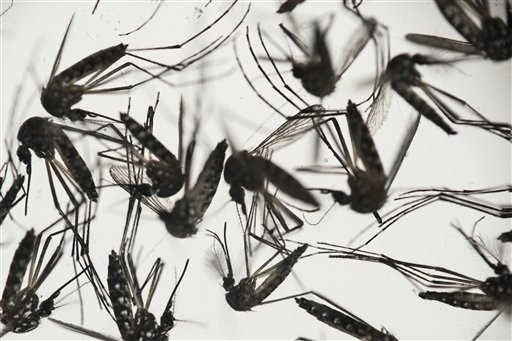Popular Reads
Top Results
Can't find what you're looking for?
View all search resultsPopular Reads
Top Results
Can't find what you're looking for?
View all search resultsLaos waits for new dengue vaccine
Change text size
Gift Premium Articles
to Anyone
T
he Expanded Program of Immunization (EPI) of the Ministry of Health is waiting for the World Health Organisation's (WHO) conclusions before deciding whether to give the new dengue vaccine to children under the age of 15.
Deputy Manager of the program, Kongxay Phounphenghack, told Vientiane Times Wednesday that this new vaccine, developed by French drugmaker Sanofi, has been administered to children in Thailand and the Philippines as part of a pilot scheme.
“Currently, we are closely monitoring the situation concerning the new vaccine that is being given to children in both Thailand and the Philippines, which suffer from similar dengue related problems as Laos in the wet season,” he said.
In particular, they are looking at the side effects associated with the vaccine.
The development of this vaccine is good news as nearly 150,000 children in the Philippines have now received doses of the world's first dengue vaccine. Only 240 children – or 0.16 percent – suffered adverse effects such as fever, dizziness and headaches.
“But the most important point is that we have to wait for WHO's approval for vaccine sale on the market as a final consideration for including it in the EPI,” said DrKongxay.
The cost of the new dengue vaccine is not yet known. But DrKongxay said it is very important that all Lao children under 15 years old and mothers-to-be can have this vaccine when it is approved by the WHO.
This is because the vaccine may cut the rate of annual dengue illness, resulting in a reduced risk of the virus in Laos. However, if the government does not have a large enough budget to buy vaccines for all target children, it may call on the private sector and donors to fund the vaccine.
It will also be necessary for parents who can afford it to buy the vaccine for their own children.
However, while Laos is waiting for WHO approval of the quality of the dengue vaccine, Kongxay has advised members of the public to follow five principles on controlling dengue mosquito populations.
Those include releasing guppy fish, closing and sealing all containers, flushing all water vessels, cleaning the areas surrounding residences, and remembering to do these tasks regularly. They should be done every week to disrupt the life cycle of mosquitoes, which breed in standing water.
“If the mosquito population decreases, the number of dengue patients will also decrease,” he said. Dengue is a mosquito-borne disease that infects about 390 million people globally each year. It causes a severe flu-like illness marked by painful joints and extreme fatigue and is lethal in 2.5 percent of cases.
Last week, the WHO recommended the use of Dengvaxia in countries where dengue is widespread, based on a review of data from 25 clinical studies in 15 countries.
China
As of March 31, there were 91 cases of dengue reported in China in 2016 (28 in January, 45 in February, 18 in March). Compared with the same period in the previous three years (2012 to 2015), the number of dengue cases reported in China has increased in 2016.
Malaysia
For the week from April 10 to 16, the number of dengue cases was 1,854, reported in the week prior. The number of cases was higher than that reported in 2015, and far exceeded the median for this week between 2011 and 2015. Two dengue-related deaths were reported, bringing the total number of deaths to 117 during the same reporting period in 2015.
Philippines (no updates)
As of Feb. 20, there were 18,790 suspected cases of dengue reported in 2016, including 65 deaths. This is higher than the figure reported during the same period in 2015.
Singapore
From April 3-9, 292 dengue cases were reported, a decrease from the previous week but higher than the number reported for the same period in each of the last four years (2012-2015).
Cambodia
As of Feb. 20, there were 663 cases of dengue (with no deaths) reported in Cambodia. The number of cases remains stable and in line with case numbers observed between 2012 and 2015.
Laos
As of April 8, there were 260 cases of dengue with one death reported in 2016. From March 26 to April 8, 2016, 13 new dengue cases were reported, which followed the seasonal trend (2011-2015).
Vietnam
As of Jan. 31, there were 13,086 cases of dengue, including two deaths, reported in 38 of 63 provinces in Vietnam. The cumulative number of cases reported in 2016 is higher than that reported during the same period in 2015.
Australia
As of March 31, 2016, there were 621 laboratory-confirmed dengue cases in Australia, which is in line with the seasonal trend (2011-2015).
French Polynesia
From March 7-13, 2016, there were 28 confirmed dengue cases reported in French Polynesia, including two requiring hospitalization. Five of the 28 cases were confirmed as DENV-1 infection. Case numbers currently exceed the epidemic threshold.







